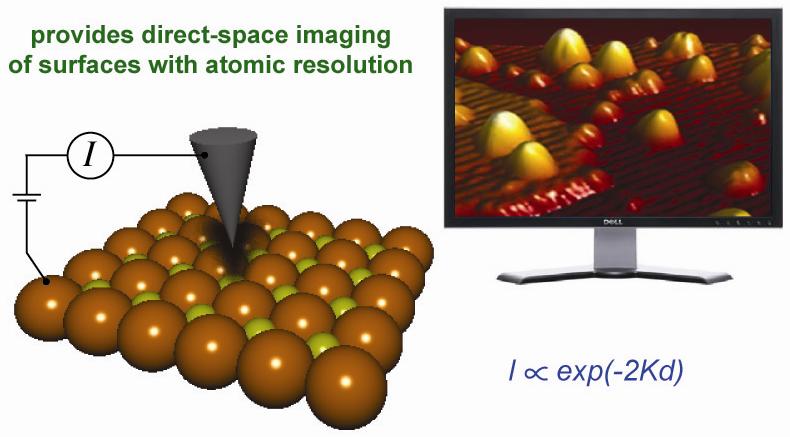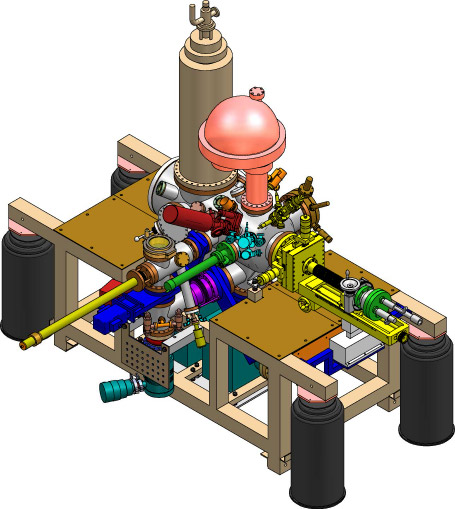Facilities
Scanning tunnelling microscopes (STM) are the most exquisite tools to not only investigate the geometric, but also the electronic structure of flat surfaces at the atomic scale. When operated at low temperatures, one can uniquely benefit of electronic spectroscopy (STS) and vibrational spectroscopy (IETS) at the single atom/molecule level. Furthermore, atomic manipulations allow for a tailored design of nano-structures. STM, AFM and their spectroscopy modes have revolutionized our understanding of the physics and chemistry at surfaces.

Our lab is located at the School of Physics and Astronomy, within the Scottish Centre for Interdisciplinary Surface Spectroscopy (SCISS). This centre is currently directed by Dr Renald Schaub. This lab hosts a low-temperature STM combined with the q-plus AFM sensor (CreaTec/SPECS instrument, delivered in July 2008). Our specifications are:
STM and STS
- base temperature 5 K
- scan range 1 µm at 6 K, 1.5 µm at 77 K
- max drift rate at 5 K: < 0.05 nm/hour
- residual vibration level: < 2 pm
- easy switch STM/AFM
- STM rests on 14 tonnes concrete block isolated from the building
Surface Preparation
- automated sputter/anneal (up to 1200 K)
- evaporators, thickness monitor
- LHe-cooled manipulator (20 – 1200 K)
- low temperature sample transfer to STM
- cleaver for special oxides
Here is a schematic of the microscope setup:

Our equipment manufacturers


